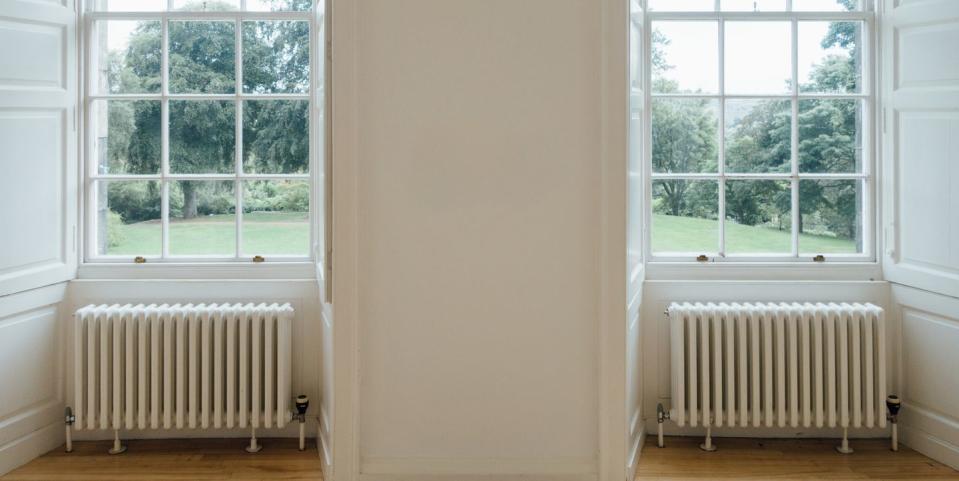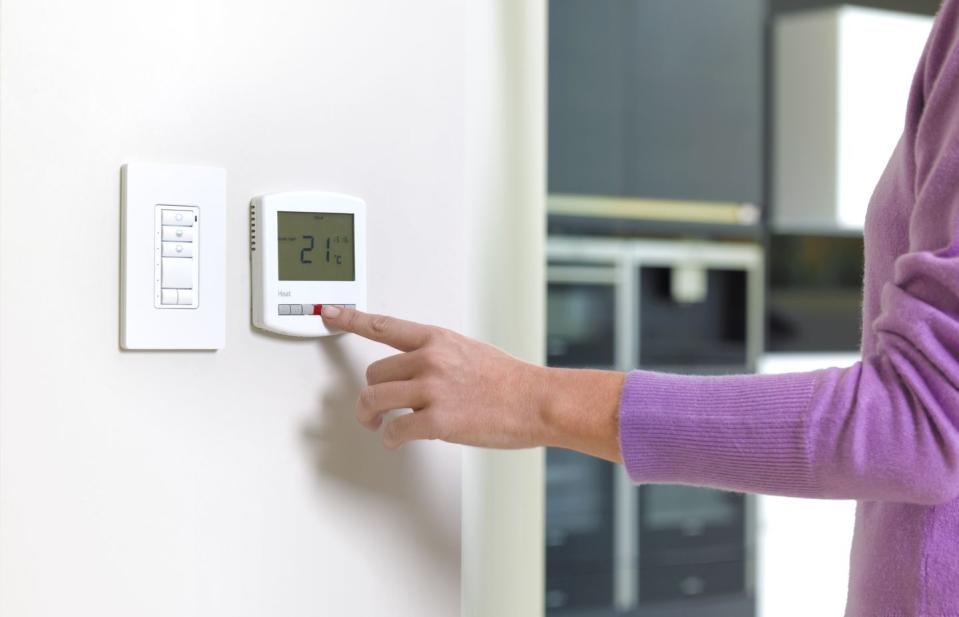How to Find the Right Energy-Efficient Heating System for Your Home

Energy efficiency should be an important concern for homeowners around the world. One, it cut costs as the savings potential of energy efficiency becomes clearer, and two, it contributes to the increasingly urgent effort to preserve and protect the environment. There are many ways to increase energy efficiency in your home, including installing new windows, adjusting insulation, and more. Chief among the changes you can make as a homeowner, though, is installing an energy-efficient heating system. Here, we break down the different options—and what to know about each.
What Is an Energy-Efficient Heating System?
First things first. It's essentially just what it sounds like: a heating system that will use only what energy it needs to in order to heat your home, thus reducing consumption and cost at the same time. Read on for a breakdown of options.

Types of Heating Systems
In-Floor Radiant Heating Systems
This type of home heating heats rooms via pipes built in beneath the floors. While it may sound somewhat modern (or even luxurious), the idea has actually been around for centuries — dating back as far as ancient Rome. The fact that it’s still in use today should give you some idea of its general effectiveness. As with any heating method though, it has its pros and cons:
Pros
Boiler-heated in-floor systems are very energy efficient.
Heat is evenly distributed in rooms.
Cons
Installation is difficult, particularly once a home is already built.
AC systems must be separate.
Heating and temperature change, while energy efficient, are relatively slow.
Boiler Heating Systems
A boiler heating system works by circulating hot water (or steam) from a boiler unit through pipes so that it can release heat in rooms throughout the house. And while some look at this as a somewhat old-fashioned or “traditional” option, modern units can be very energy efficient. This is in part because the systems are simply designed better today (with specific regard for efficiency ratings). But it’s also because boiler heating can be compatible with smart control systems like Nest, which ensure that only the minimum amount of energy required to heat the home is used. The only potential drawback is that boilers can sometimes be noisy. To that point though, a new boiler guide by HomeServe outlines how these issues can be fixed fairly easily (or which can alert you that maintenance is needed, helping you to avoid a total boiler breakdown).
Pros
New boilers are as efficient as it gets.
Heating and temperature change are fast.
Cons
Radiators (which release the heat into rooms) can be inconvenient.
AC systems must be separate.
Forced Air Systems
A forced air system is a popular modern option that heats (or cools) a home through a furnace and a network of air ducts and vents. The simplest way to think of it is that air is heated and then pumped directly into rooms (as opposed to emitting from a radiator or in-floor system). It’s simple in nature, but it does depend on a fully installed system within walls, floors, and/or ceilings.
Pros
These systems are generally fairly affordable and quite efficient.
Temperature changes are felt quickly.
A forced air system can also produce cool air, making it a full heating and AC solution.
Cons
The system needs to be built into the house.
These systems can blow particles into rooms, causing a need for filters in some cases.
Furnaces make a lot of noise.
It may well be that we’re on the cusp of newer and even more efficient home heating methods as well. It’s possible now for homes to use solar power, wind power, and even large batteries to power various aspects of their homes. And as these technologies improve and become more accessible, heating standards may shift. That is the sort of eco-friendly effort you can contribute to by seeking out a more efficient way to heat your home — not to mention you’ll save a little bit of money on your energy bill in the process!
Geothermal Heating Systems
Geothermal heating systems pull heat from the ground to power a home. While a lot of the systems we discuss with specific regard to energy efficiency are either new or newly popular, geothermal systems have actually been in use for several decades. Despite this, some geothermal systems can be far more efficient than traditional HVAC systems.
Pros
The pumps that power these heating systems are inexpensive to operate, making these systems overall quite affordable.
These systems last for a long time, and typically require minimal maintenance.
Pulling heat from the ground (and depositing home heat into the ground when you turn the system to cooling) is an efficient and sustainable practice that minimizes emissions.
Cons
While maintenance is cheap, the initial cost of installing a geothermal system can be high.
Geothermal systems can be disruptive to install, and can only be built into some sites, making them somewhat less versatile than some alternatives.
Follow House Beautiful on Instagram.
You Might Also Like

